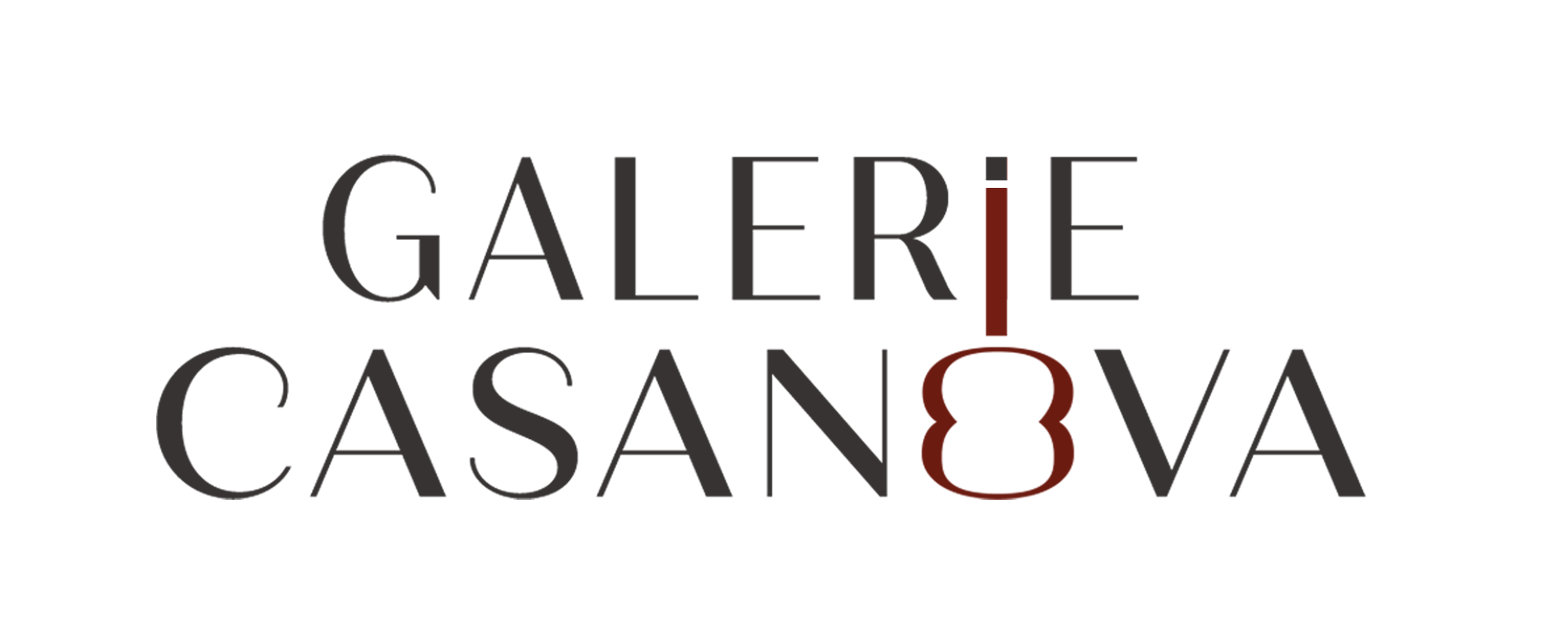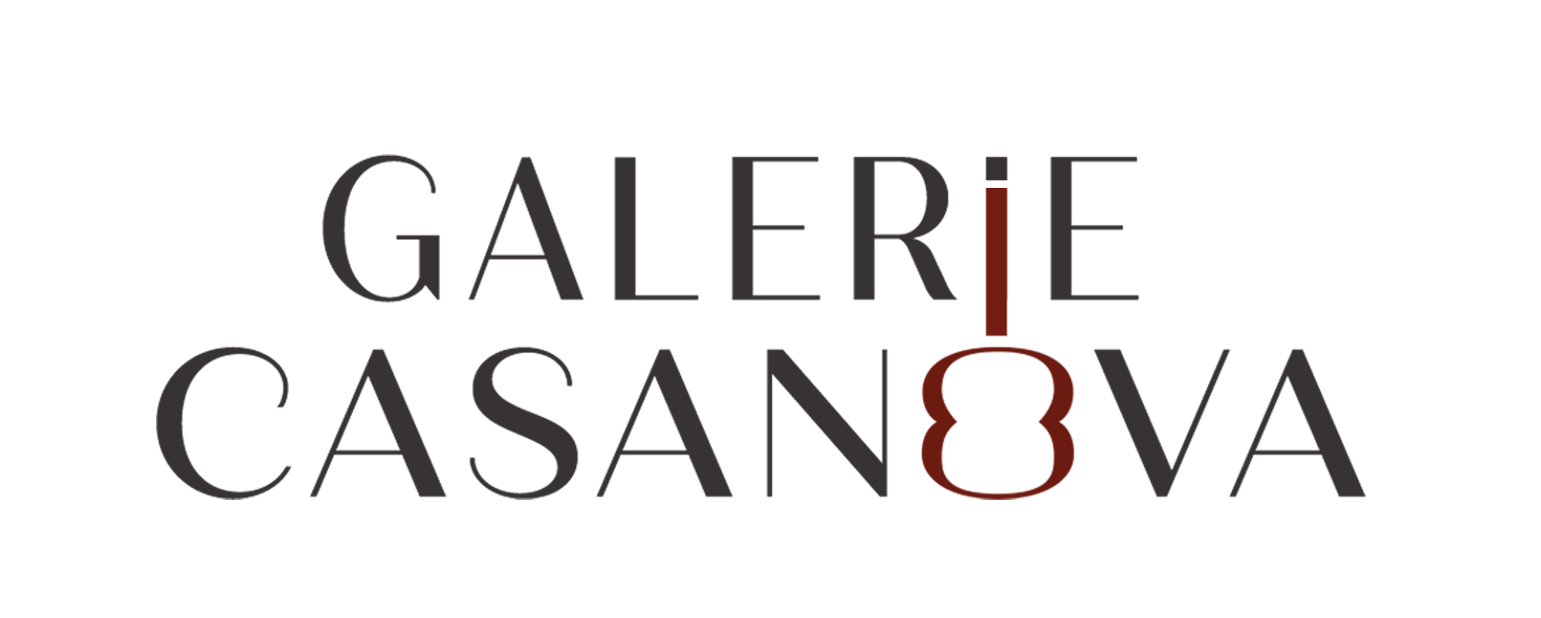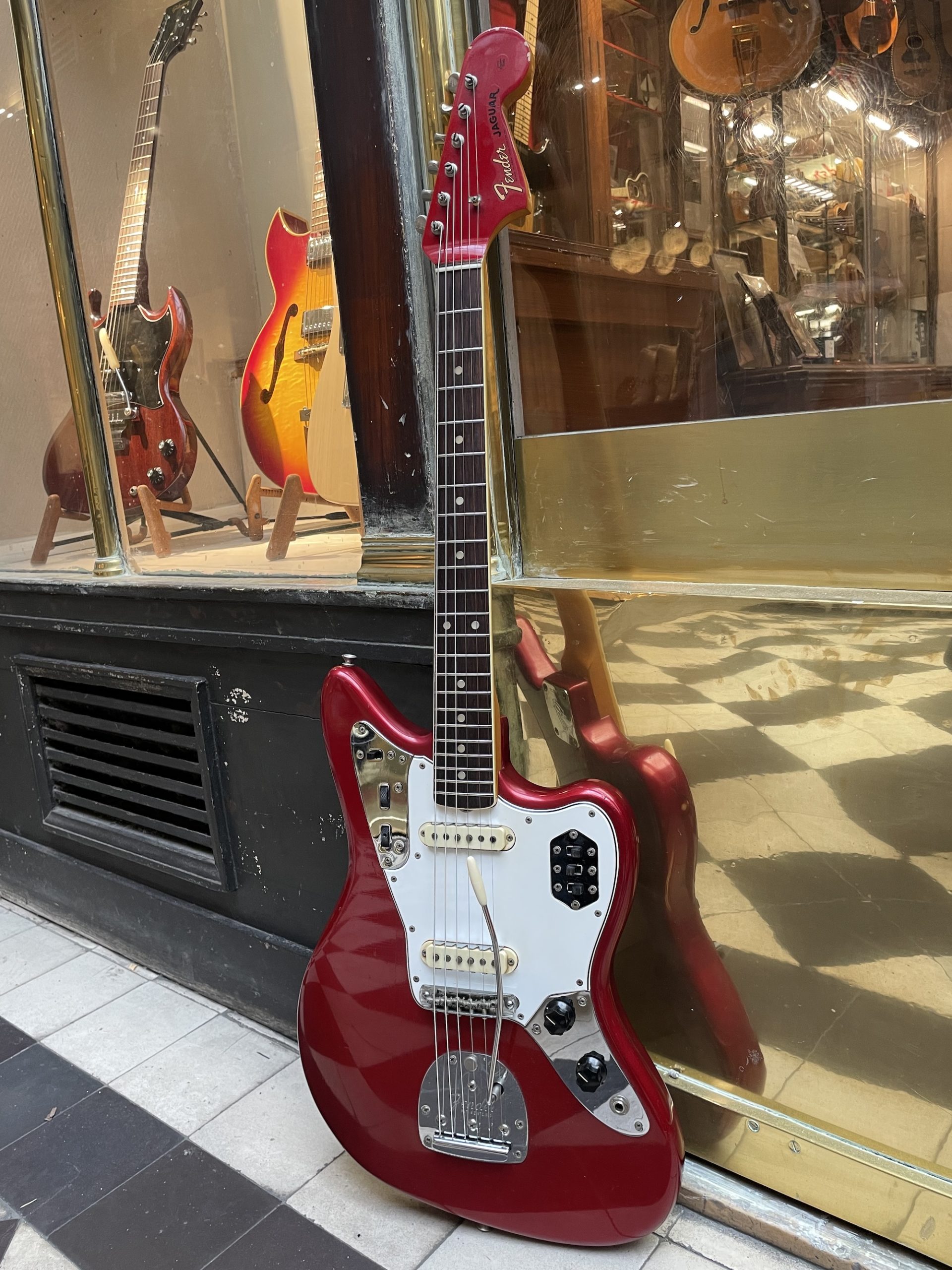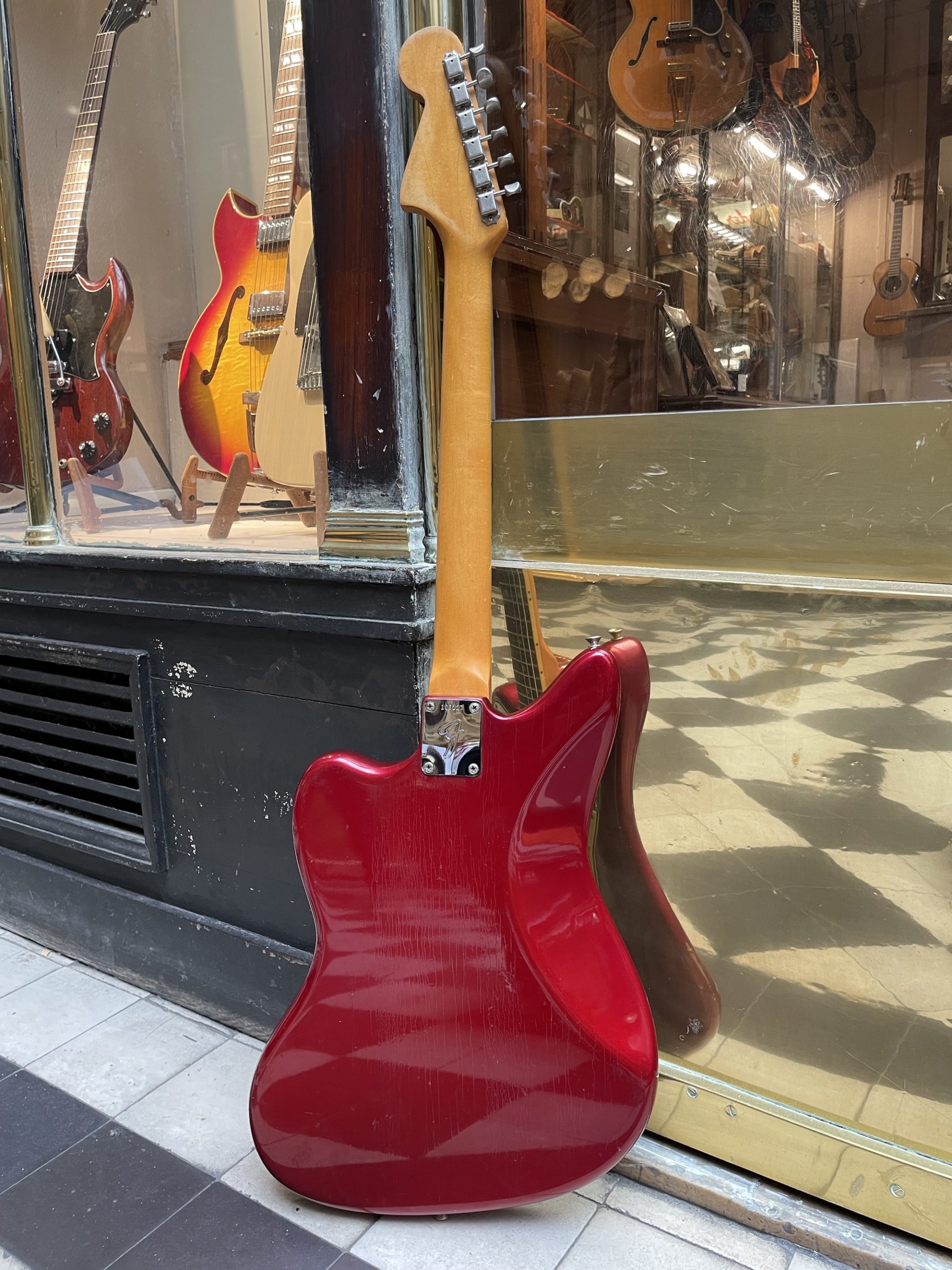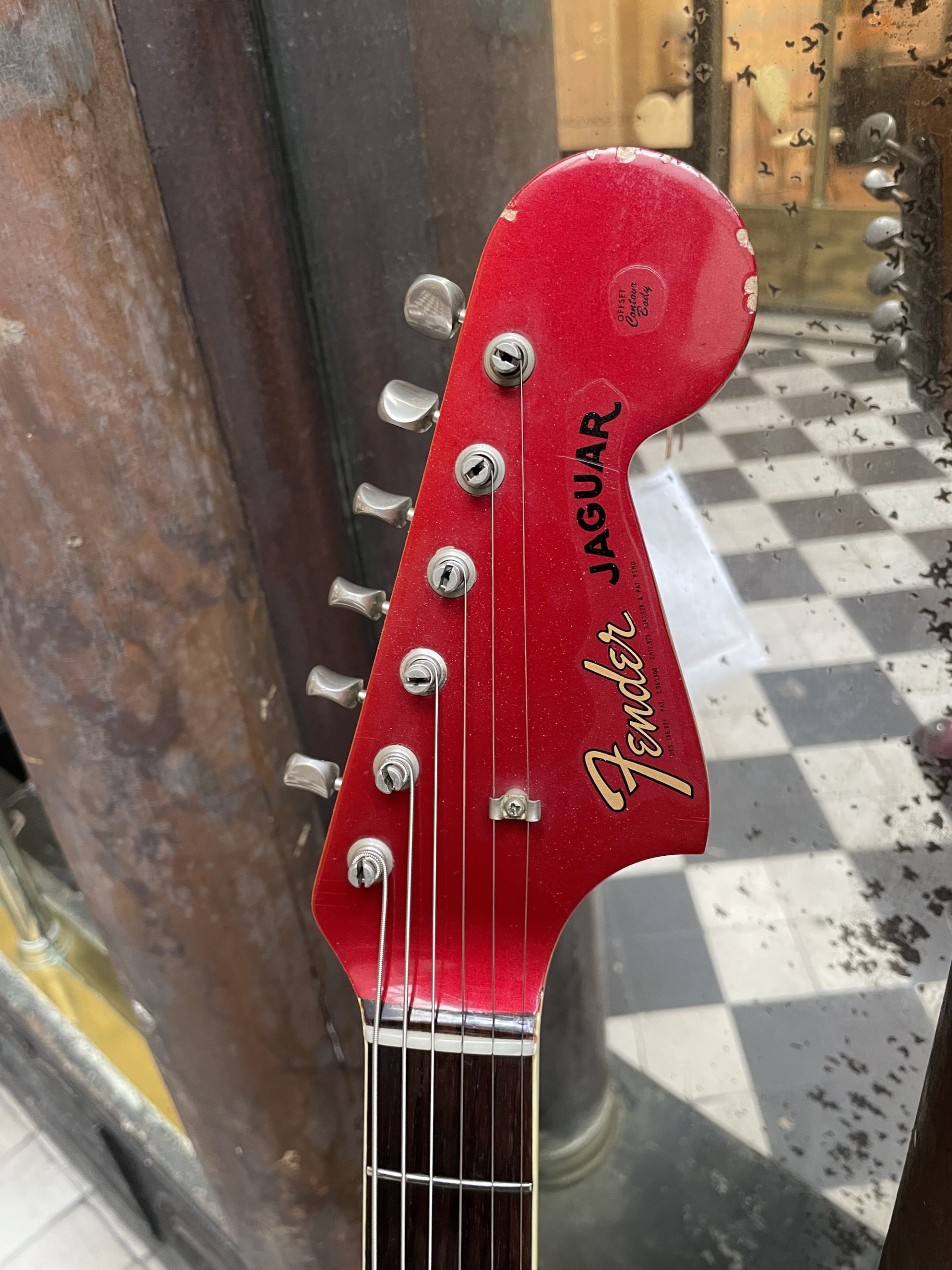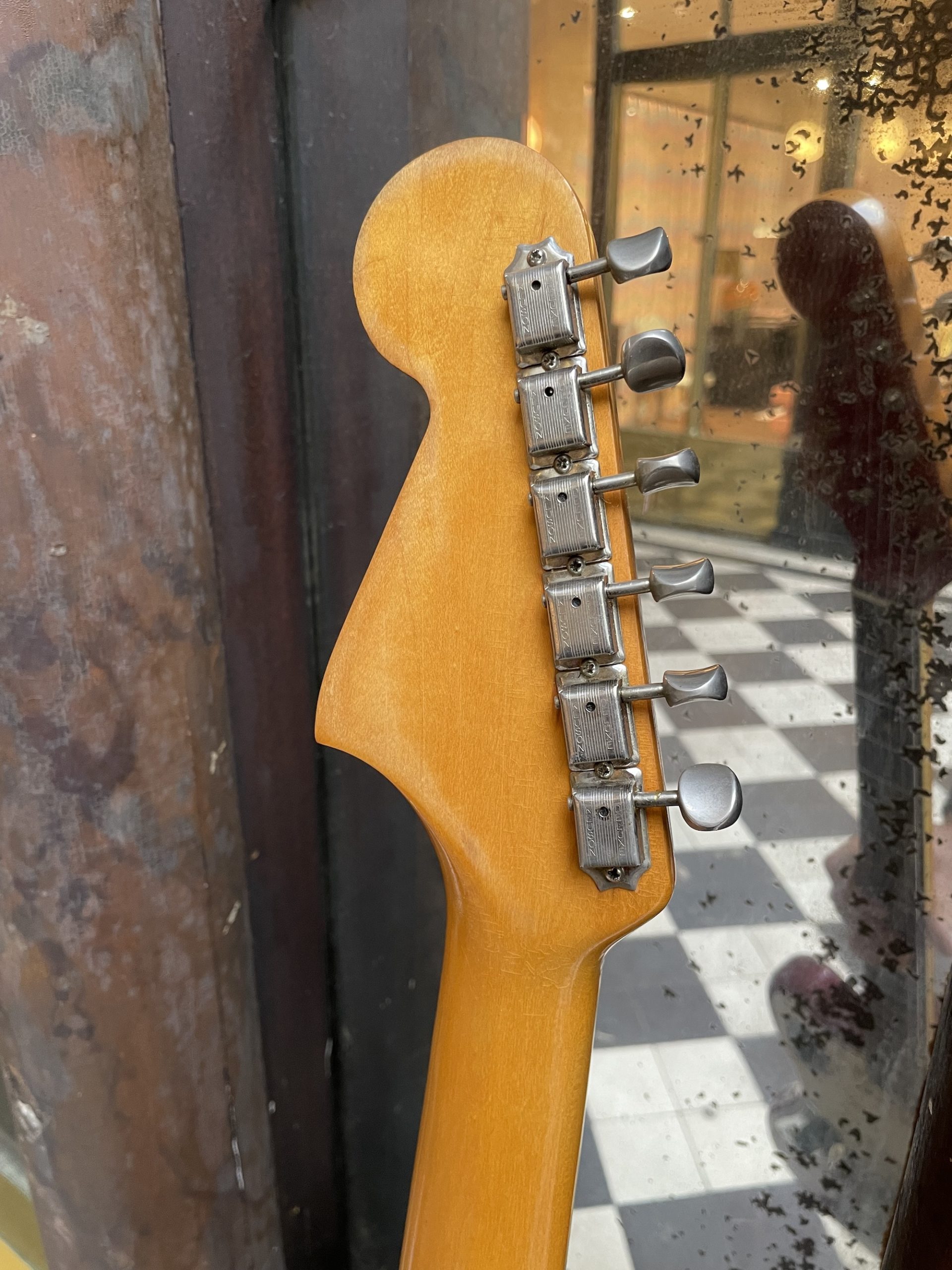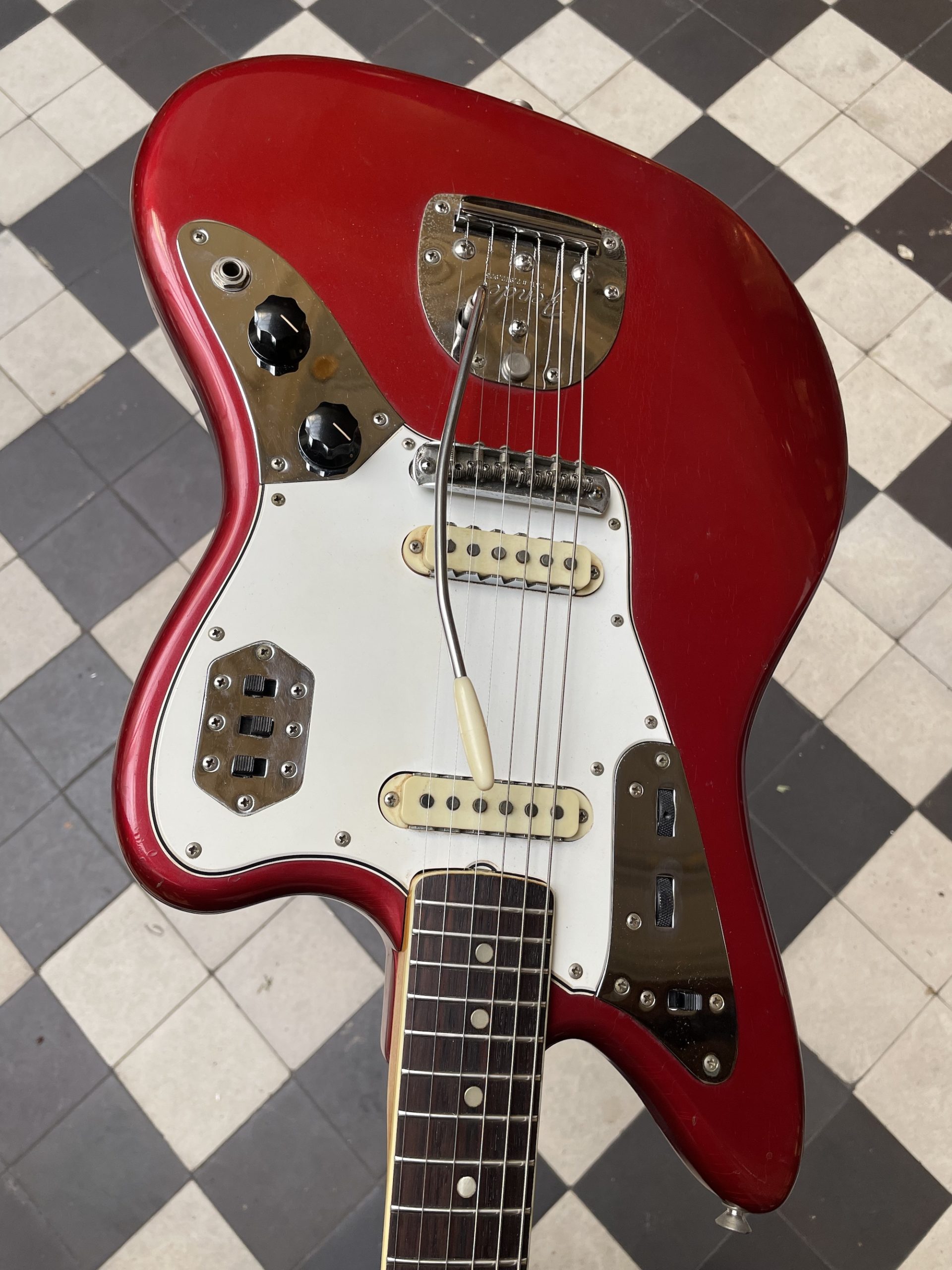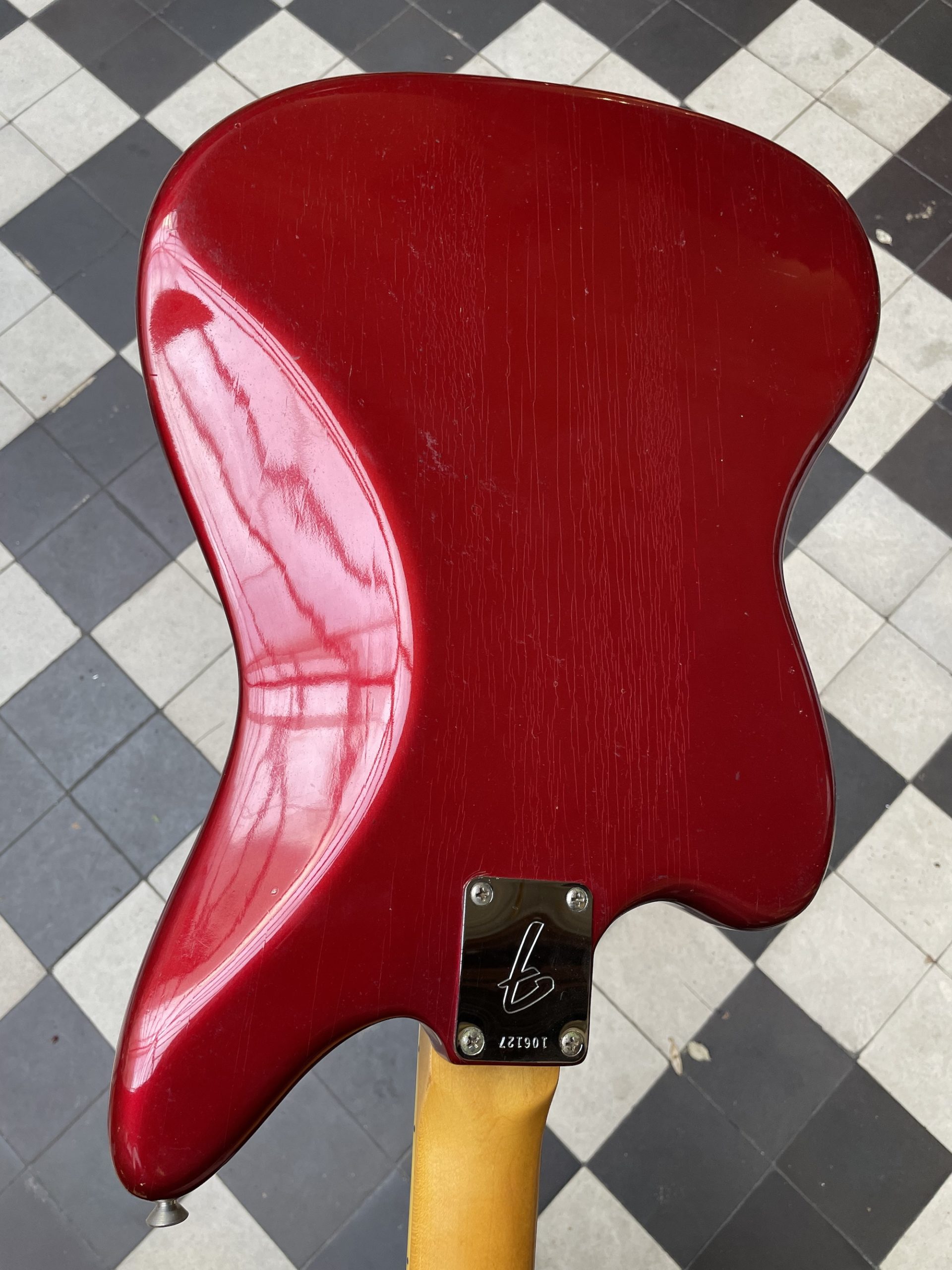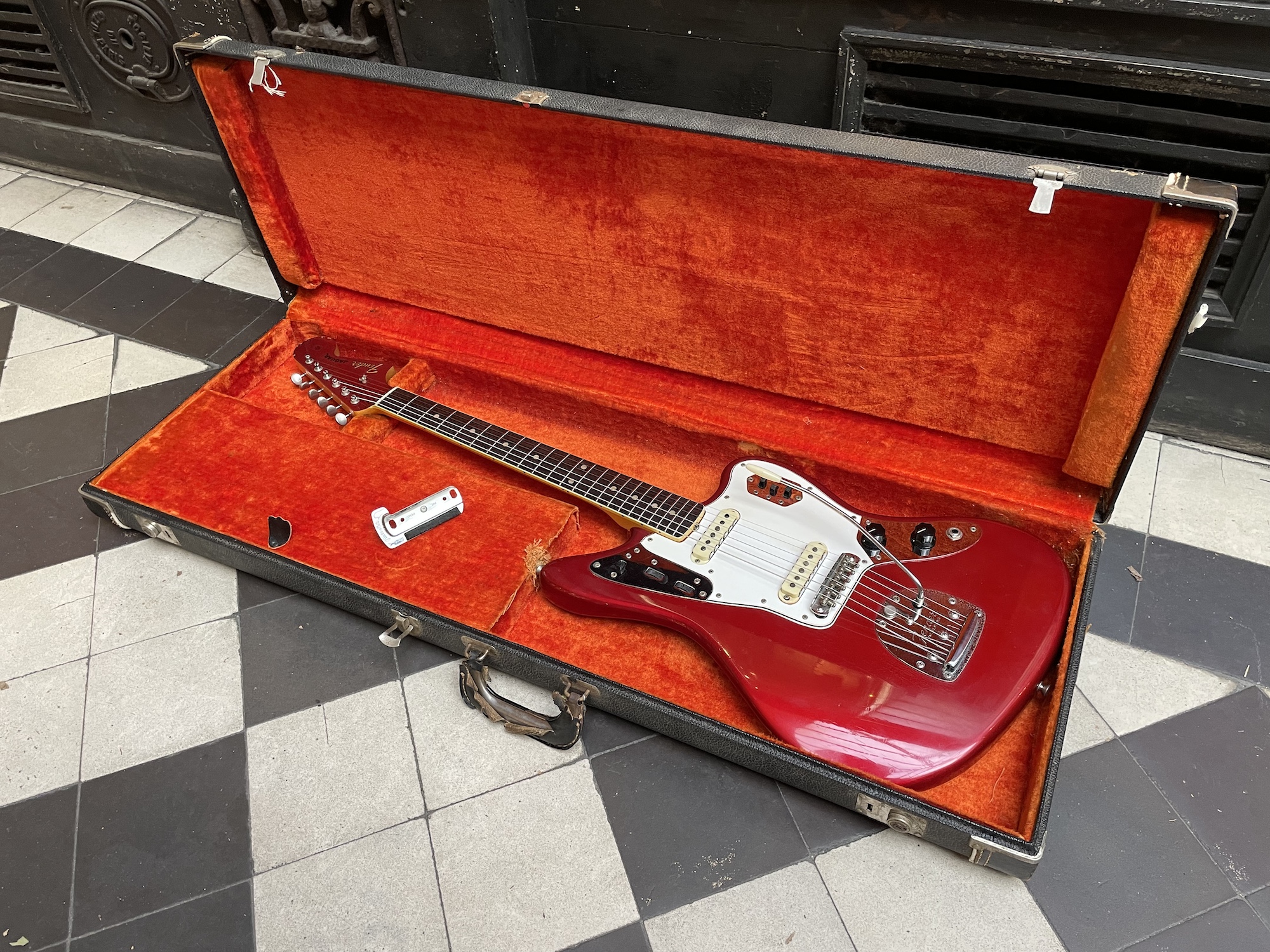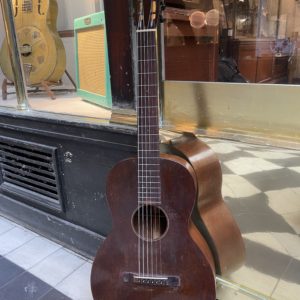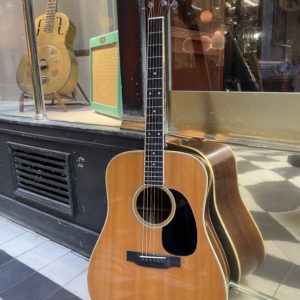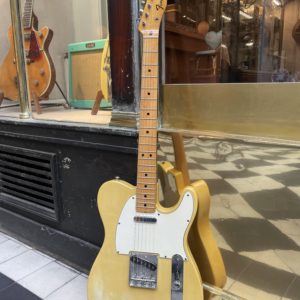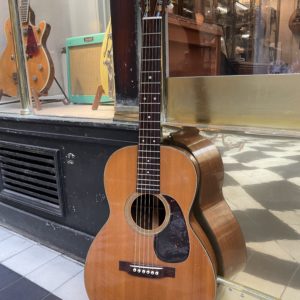1965 FENDER JAGUAR C.A.R.
The prices indicated correspond to the price in the case of payment in-store or by bank transfer. In the case of payment by credit card via the website, a processing fee of [3.25% + €0.25]* will be applied to the total amount of the basket, including delivery costs.
1965 Fender Jaguar, in a magnificent Candy Apple Red custom color finish and in exceptional original condition.
For the Fullerton manufacturer, the period from the second half of the 1950s to the first half of the 1960s is synonymous with the visual exuberance of its guitar models, since they are offered in a wide range of custom colors. For an additional 5% compared to the price of the instrument in its standard Sunburst or Blonde finish, the choice of color was left to the customer’s initiative when placing an order with a retailer, these finishes being identical to those used in the automotive industry (note that the companies that supplied paint to Ford, Cadillac, GM, and other car manufacturers were the same companies that supplied them to Fender). When we observe the evolution of the color charts offered by Fender, we see a narrowing of the available choice in favor of metallic colors, like the Candy Apple Red finish on the Jaguar presented here. It should be noted that this finish is very particular, in that it was initially not available in the catalog of automotive industrial paints, but used mainly in the world of custom-cars which was booming at the same period. We will take the time here to point out the name of Joe Bailon, renowned in the modding community as a master builder, to whom the original “recipe” for Candy Apple Red is attributed. He counted as a leading figure in the subculture of custom-cars, which was itself derived from the very American tradition of hot-rod cars, where the objective was no longer so much to unleash unreasonable amounts of speed, but on the contrary to take the time to work on the shapes and colors of the vehicles. The color in question also has a singularly contemplative background story, as it is said to have come to Bailon on a stormy night spent behind the wheel, while he was staring at the rear lights of the car driving in front of him, two shapes glowing red and dripping with rain, the effect of which he would have sought to reproduce in a paint formula. In any case, we are forced to recognise the hypnotizing nature of the finish, although it is here applied to a musical instrument. All of this helps to underline the historical links that exist between the objects that are the automobile and the guitar, if not in their industry, then at least in the emotions that can be aroused by looking at them.
For the rest, the guitar presents all the typical elements of the period, which is that of the transition of the Fender company following its acquisition at the beginning of the same year by CBS, and which results in mainly aesthetic variations of the guitars. : among other things, the new logo on the headstock of the guitar in bold, golden letters, taking over from the so-called spaghetti logo, the multi-ply ABS pickguard, the white binding around the edge of the fingerboard. All the main parts of the guitar, including its finish, its hardware, its electronics, and its two Jaguar pickups which have this very particular sound which, so to speak, caused the model to fail in its first period of existence, before to bring joy to so many guitarists in the 80s and 90s within the grunge and new wave movements in particular. We note very slight varnish crackling, as well as marks around the body which were left by the protective shell which originally covered the back of the instrument and which has since been removed. The guitar has also been rigorously inspected, fully set up and prepared in our workshop so that it can offer the best of itself, not only as an object but as a musical instrument.
Sold in its original case, with original tremolo rod and mute.
SOLD
